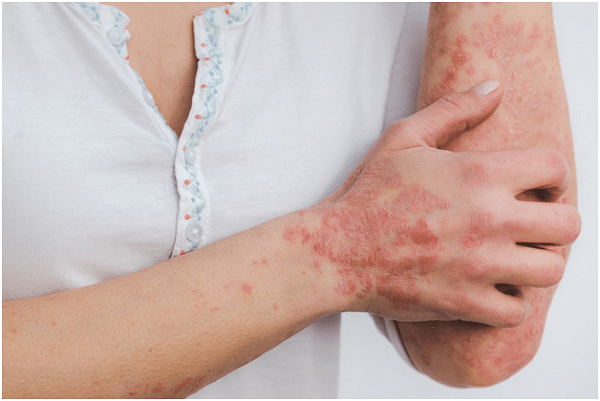Table of Contents

Light therapy has shown great promise in skincare. Many celebrities and influencers are now using and recommending this therapy to their followers. Light therapy has shown significant promise in treating various skin conditions and reducing aging signs.
Light therapy is very easy to use, and you can see the difference within a short time. However, if you don’t use it properly, you will miss out on the benefits.
In this article, we will discuss how to use light therapy for better skin properly.
Types of Light Therapy
Many different colored lights are used for light therapy. The most prominent light therapies known to work better and without any side effects are:
- Blue Light Therapy
- Green Light Therapy
- Amber Light Therapy
- Red light and Near-Infrared Light Therapy
Blue Light Therapy
Blue light therapy is used for treating skin conditions like acne and eczema. Blue light has antibacterial properties. It can kill viruses and bacteria living on the skin.
Once dead, these viruses and bacteria cannot harm the skin or cause inflammation. Therefore, you get rid of the redness and inflamed skin.
Green Light Therapy
Green light has a balanced wavelength among all the other visible light. It soothes the skin and helps reduce hyperpigmentation and freckling.
Amber Light Therapy
Amber light has slightly bigger wavelengths than green light. When the amber light is applied to the skin, it helps produce collagen protein in the skin. Therefore, your skin can protect itself from damage.
Red Light and Near-Infrared Light Therapy
Red Light has the largest wavelength among visible light. Therefore, it can go deeper into the skin and start healing the skin from inside.
In near-infrared light therapy, slightly bigger light wavelengths than visible red light are used. In most cases, red light therapy and infrared light therapy are used together for dermatology.
How does Light Therapy Benefit Your Skin?
Light therapy is highly dependent upon the light wavelength used during the treatment. Blue light has the smallest wavelength of visible light; therefore, it cannot go deeper into the skin. However, this light can enter the cells of bacteria and viruses and kill them. Thus, the skin doesn’t get inflamed.
On the other hand, red light and near-infrared light have the highest wavelengths. They go deeper into the skin and increase metabolism. As a result, skin cells can repair cellular damage and replicate themselves for healthy growth. Also, increased collagen production restricts skin damage and removes wrinkles from the skin.
All the other lights in between red and blue benefit skin differently. Some calm the skin for a soothing effect, some help produce necessary proteins to make the skin look better.
How to Properly Use Light Therapy for Better Skin?
You can book a light therapy session in a therapy saloon or buy a light therapy device for getting light therapy. Either way, you will need to maintain some procedures to get the most out of your therapy session. The procedures are:
- Clean your skin thoroughly. It will help light to reach your skin properly.
- Use sunscreen on your skin. In light therapy, high-intensity light is used. Therefore, it is better to protect your skin from potential damage.
- Wear protective eyeglasses. If you have light-sensitive skin or are taking any medication that makes your skin light sensitive, wear light protective clothes.
- Turn on your therapy device and place it near your skin. Some devices like wands or face masks may need to be kept directly on your skin.
- A light therapy session may last for 15-20 minutes. If you are using a wand, you may need to keep it on each skin patch for 3-5 minutes. Follow the instructions that came with your device or ask your therapist.
- If you are trying out light therapy, take the therapy for less time. Notice if there are any red marks or inflammation on your skin. If not, you can increase therapy time step by step.
- If you experience any redness or burning, try reducing therapy time, light intensity, and distance to see what suits you.
- It is better to try the therapy in other body areas first before applying it to the skin.
- After therapy, you can clean your skin with a gentle vitamin cleanser. If you experience burn or redness, put aloe vera on the skin. The redness or burn will go away within 2-3 days.
How to Choose Your Light Therapy Device?
As we discussed earlier, each light therapy can improve different skin conditions. If you suffer from acne, eczema, blue light therapy is a great solution for you. Similarly, depending on your skin condition, you can choose what light therapy you want to take.
Some light therapy devices come with different colored lights for getting multiple benefits. However, most at-home devices feature a maximum of three-color LED lights. Light therapy devices with multiple colored LED lights may be expensive.
Also, there are different shapes and sizes of light therapy devices. Some come as face masks, some as panels, some as wands. If you are using light therapy on small skin patches, wands are a great choice. However, if you want to use light therapy for the whole body, choose light therapy panels or lightboxes.
Bottom Line
Light therapy is very suitable for treating and caring for skin. One can get multiple benefits from having light therapy. Also, many researchers acknowledge the light therapy benefits.
If you are suffering from skin conditions, give light therapy a chance. Make sure to consult your doctor before getting light therapy. Your doctor can suggest the most suitable therapy for you.